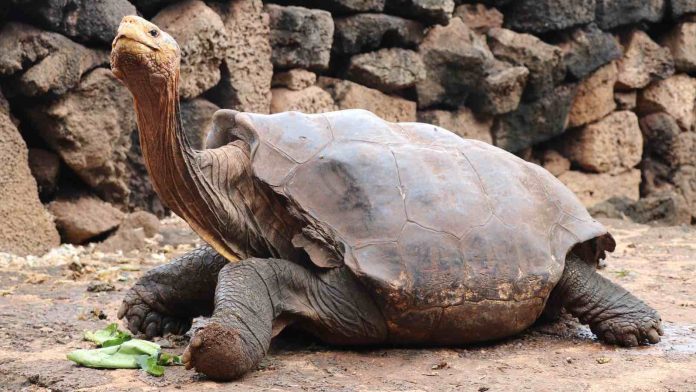The number of Galapagos giant tortoise living on the island of Española has reached at least 1,000. The latest census was conducted by James P. Gibbs, a professor of vertebrate conservation biology at the SUNY College of Environmental Science and Forestry, and colleagues.
Only three males and 12 females remained living on Española in 1965. The remnants of the population were collected and taken to Charles Darwin Research Station in 1971 for a captive breeding program. The original tortoises and their offspring were released back onto Española after the major threat to the tortoise was removed from the island. Goats that were brought to the island for a food source by pirates and settlers took over the natural habitat of the Galapagos giant tortoise.
The population of Galapagos giant tortoise on the island of Española has increased 67 times over the last 43 years to be 1,000 strong. The tortoise census was the combined effort of the Galapagos National Park Service, Charles Darwin Foundation, and visiting scientists from across the world. The recovery of the land on Española produced an abundance of shrubs and trees. A major food source for the Galapagos giant tortoise is a cactus that cannot grow well in the altered soil of the island. The potential for planting more cacti to help the tortoise is being explored.
The researchers are jubilant and rightfully so. This is one of the few examples of man’s intervention in the demise of an endangered species that has produced a recovery of population that should keep the animals on Earth from now on. The Galapagos giant tortoise is the largest tortoise that lives on Earth and one of the longest living animals.















